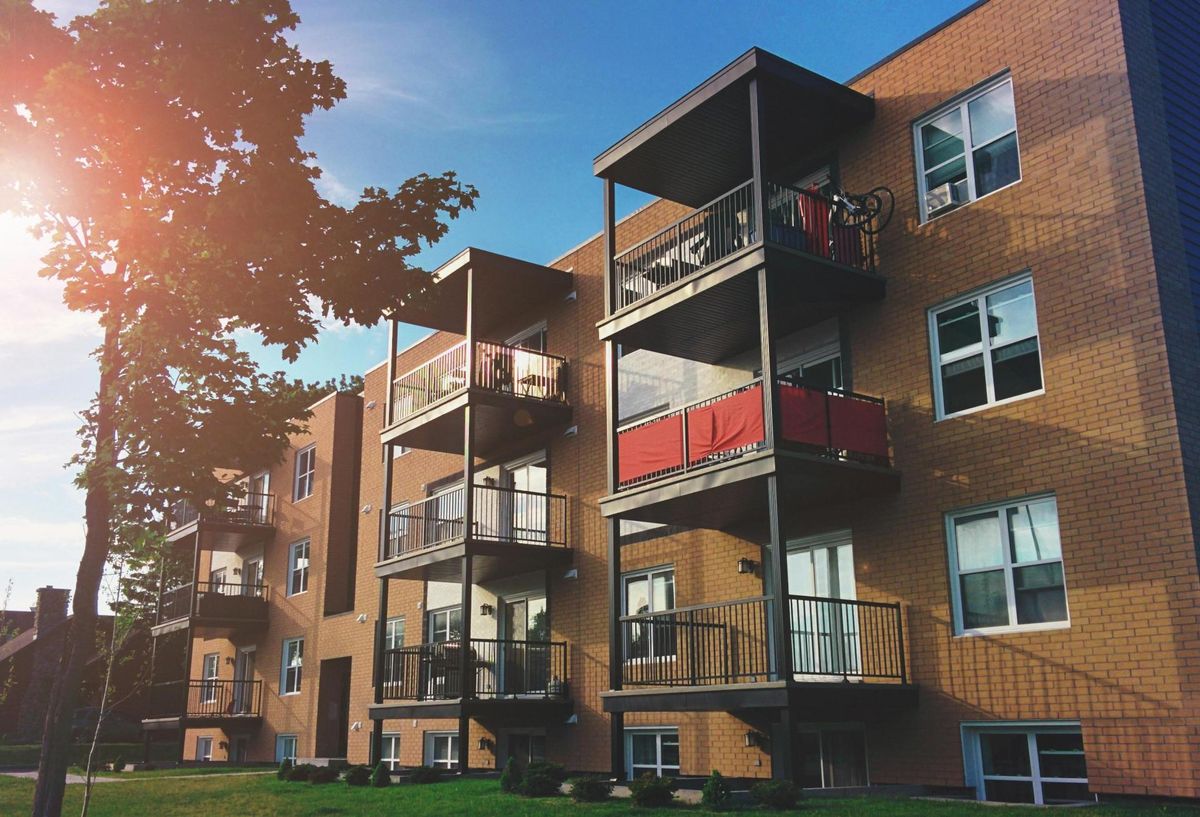With both interest rates and property prices falling, Houston’s multifamily market is roaring back.
It won’t be enough to save a heavily distressed sector.

The gap between newer Class-A or Class-B apartment communities and older workforce housing in Houston is distinct. Investor demand is surprisingly robust for high-quality properties in good locations, brokers say. Prices are expected to fall just enough to attract an infusion of capital and then stabilize the market.
But distress is mounting in the Class-C sector, where syndicators rushed in to buy properties at highly compressed cap rates in the early years of the pandemic, not anticipating the interest rate spike ahead.
Lenders have extended and pretended in hopes of preserving their financial investments, but experts say a flood of distressed properties will eventually go up for sale in Houston, sending prices plunging and leaving properties in disrepair without equity to stabilize them.
“Class-C in Houston is very, very challenged,” Knightvest Capital CEO and founder David Moore said. “I don’t think people know how far the pricing has to fall in order for some of these properties to transact, which is somewhat scary.”
The Return Of Sales
Investment activity was depressed in 2023 and 2024 but began picking up in the first quarter of this year after sellers started dropping their prices, said Aziza Rehmatulla, multifamily capital markets director at JLL.
JLL recorded about $1.1B worth of multifamily investment sales in the first half of 2025, and it expects the second half to be busier, particularly in the fourth quarter, she said.
That should put the metro much closer to prepandemic averages of about $6B annually.
“We loved the peaks that we saw in 2021 and 2022, but given that interest rate environment is pretty difficult to ever re-create, we just want normal,” Rehmatulla said.
There are many reassuring factors drawing investors’ attention to Houston, Moore said. Rent growth is slow but much better than the rates seen in cities like Austin, where a building spree led to oversupply.
“Houston is performing better than some of our other Texas markets because, for once, we are not the poster child for overbuilding,” Pagewood Senior Vice President Susan Pohl said.
Dallas-based Knightvest Capital last week announced its acquisition of Arlo Buffalo Heights apartments, a 318-unit, wrap-style community built in 2014. Houston has always been a favorite market for Knightvest, but it’s even more attractive now due to comparatively low prices, Moore said.
“Of all of the markets we’re in, it’s met the pricing that’s acceptable for buyers,” he said.
Houston’s average sales price per unit was $157K in the second quarter. While this is the highest level in two years, it is well below the Texas average of $178K and the U.S. average of $217K, according to a Colliers report.
“At this point in the cycle, people have gotten more realistic,” Pohl said.
It may be easier for sellers to capitulate in Houston, where advertised asking rents were up 0.2% on a trailing three-month basis through May, according to Yardi Matrix. Comparatively, rents in Austin were down 5.2% year-over-year.
Investors in Houston might not have gotten the returns they were hoping for, but they can at least sell and break even, Moore said.
“Whereas in Austin, you’re like, ‘Wow, we can’t get our investors’ money back, so let’s hold,’” he said.
The Distress
While the gap between seller and buyer expectations is closing for Class-A and B assets in Houston, prices have much further to fall in the Class-C space. Distress is rampant now after investors rushed in to buy multifamily properties at extremely low interest rates and inflated prices in the early years of the pandemic.
“Hindsight says they were being overvalued,” Moore said. “Part of the reason they were overvalued is because rent growth was high and people just assumed rent growth would continue, and it didn’t.”
Many of these purchases came with floating-rate loans, leading to an inability to pay mortgages when interest rates spiked. Houston’s multifamily market has seen some major foreclosures in the years since.
There were more than $400M worth of multifamily notes backing 12 properties filed to sell at September’s Harris County foreclosure auction, according to online records analyzed by Bisnow, though a filing doesn’t necessarily indicate a property will be foreclosed on.
Lenders that take over distressed properties are hoping to sell at what they paid for a property or at least the amount of the loan, which is typically 75% of the total price, Disrupt Equity co-founder Feras Moussa said.
“The price needs to come down further,” he said.
An extreme example is an apartment complex that sold for $25K a door, when it would have gone for $100K a door if it was stabilized three or four years ago, he said.
“These are tough deals, 500-, 600-unit deals here in Houston that are already mismanaged, 20% occupied, then they get foreclosed on,” Moussa added.
But many lenders have extended and pretended in hopes of not taking a write-off, while they hope that the market shifts in a way that the buyer can get out of the deal without too much pain, he said.
“At some point, they can’t extend and pretend any longer,” Pohl said. “There’s going to be a day of reckoning.”
The Federal Reserve’s 25-basis-point interest rate drop in September might allow for some refinancings, but it largely won’t change the distressed environment in Houston. The rate cut doesn’t do anything to the more important five- and 10-year Treasury rates.
Borrowers who can’t refinance will face foreclosure or will need to sell.
Likewise, some lenders have taken over properties and are now investing to stabilize and later sell them, said Bob Heard, executive vice president of multifamily investment properties at Colliers Houston.
That is, if they can find buyers.
“We’re anticipating there’s going to be some sort of flood of these deals coming to market, and there’s just not enough qualified buyers to buy them,” Heard said. “So if too many deals come at the same time, it’s going to drive pricing down.”

The Mismatch
But even a significant price drop is unlikely to shift institutional investors’ attention to the Class-C market.
“I don’t think institutional capital is going to chase Class-C deals at any price,” Moore said, adding that the price drop in the Class-C world likely won’t impact pricing in the institutional sector.
The buying pool for lower-tier properties is small, and it may even shrink as buyers find they can get more bang for their buck in a renormalizing market.
“There is definitely a line in the sand for certain deals,” Rehmatulla said. “That’s really just capital getting a little bit more stringent on what they’re looking for.”
Houston-based Disrupt Equity has largely shifted its acquisition pipeline from Class-C to Class-B properties, Moussa said.
The firm will still acquire Class-C at the right price, Moussa said, such as the asset it acquired just west of the Galleria last June for about 60% of the previous purchase price.
“So we’ll still buy, but in terms of just what’s the most attractive right now is really focusing more on that B product,” Moussa said.
Properties built 30 years or longer ago are functionally obsolete, meaning they need renovations to the exterior and interior to become stabilized, Moore said. Knightvest focuses on newer properties that can thrive with just an interior renovation, he said.
Investors aren’t as interested in deep value-add opportunities because the necessity to boost rents to turn a profit is inherently riskier, Pohl said. Buyers may identify a good deal that needs work that seems affordable, but they can’t find equity to partner with them because of the high risk, she said.
This trend has led to some glaring cases of foreclosures, some with tenants complaining of “deplorable living conditions.” But if lenders take over properties with plans to fund renovations themselves and wait until the property is stabilized to sell, that comes with the risk of entering the market at the same time as a flood of distressed properties, Heard said.
“I’d be worried if I was taking something back, anticipating on putting money into the property to stabilize it, to then go sell it at a higher number, because the chance of them … taking away all the upside will eventually hurt pricing on the exit,” he said.
Lenders have an opportunity to get out at a good price right now, Heard said.
“It’d be better to be the first than the last,” he said.
